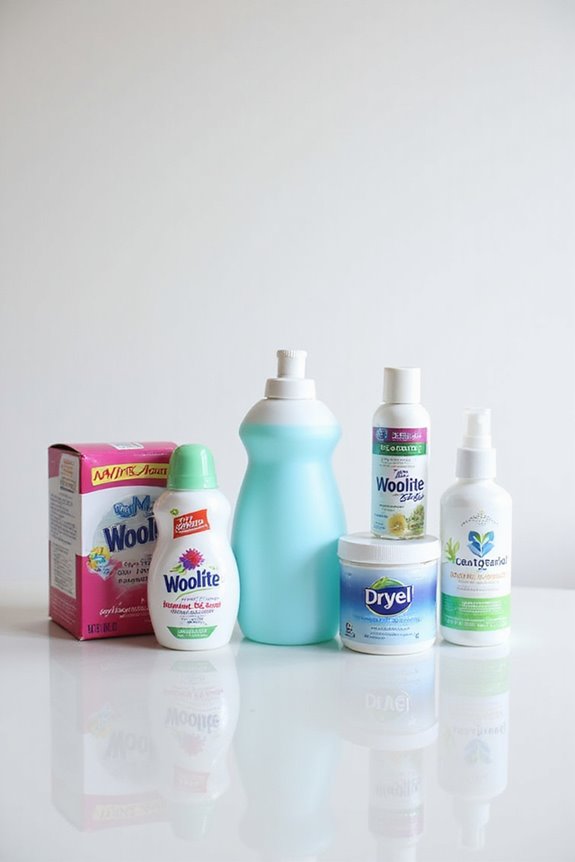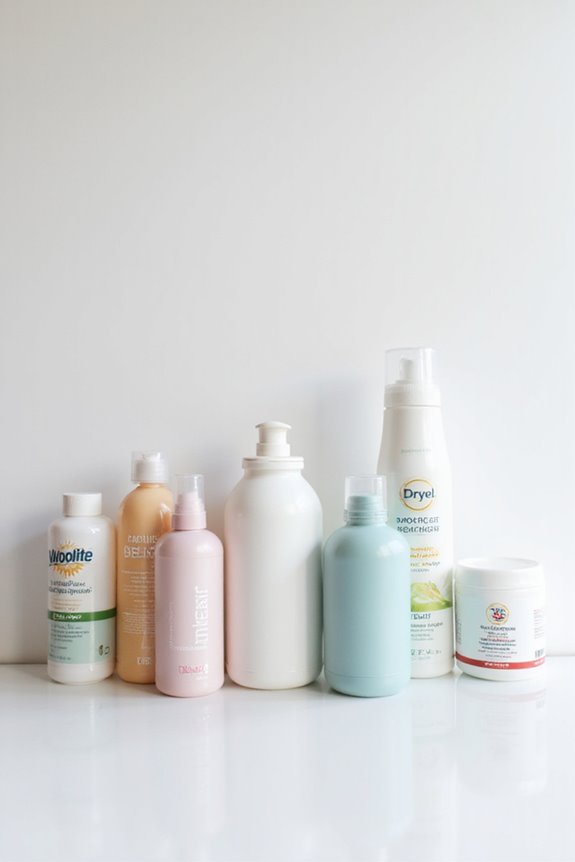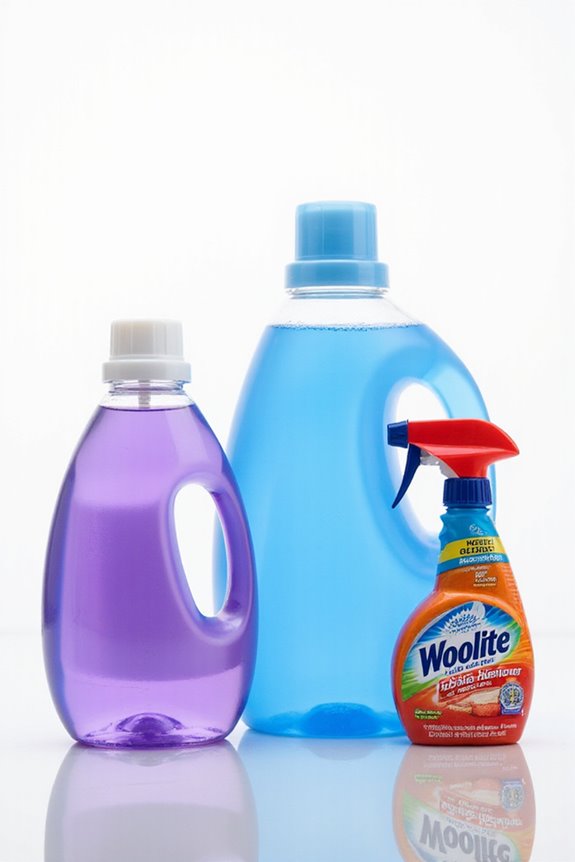We’ve found that fabric softener can definitely make your clothes feel softer at first. However, over time, it can leave a waxy buildup. That residue might make fabrics feel stiff instead of cozy. Plus, it can reduce absorbency in towels and breathability in athletic wear. It’s kind of a mixed bag! But hey, if you want to keep your fabrics in tip-top shape, stick around, and we’ll share some handy tips for long-term care!
Key Takeaways
- Fabric softeners initially enhance fabric softness by creating a lubricating film on fibers.
- Over time, residue buildup from repeated use can lead to a stiff or waxy feel.
- Excessive use of fabric softeners may reduce fabric flexibility and absorbency.
- Reduced breathability from softeners can lead to discomfort in warm weather.
- For long-term care, consider alternatives like wool dryer balls or vinegar to maintain softness without residue.
Understanding the Mechanism of Softening Agents
When we think about fabric softeners, we might picture fluffy towels or clothes that smell great. But it’s all about the softener chemistry behind the magic! Fabric softeners mainly contain cationic surfactants, which are positively charged molecules that bond to the negatively charged fibers of our clothes. This electrostatic attraction helps soften the fabric while reducing static cling.
These surfactants create a lubricating film on the fibers, making them feel smoother. It’s like giving our clothes a cozy little hug! Plus, the hydrophobic tails of these surfactants help repel water, which can even speed up drying time. Additionally, many fabric softeners are now formulated to be hypoallergenic formulations, making them suitable for individuals with sensitive skin. So, next time you do laundry, remember, it’s not just about the scent—it’s science!
Effects of Repeated Laundering on Softness
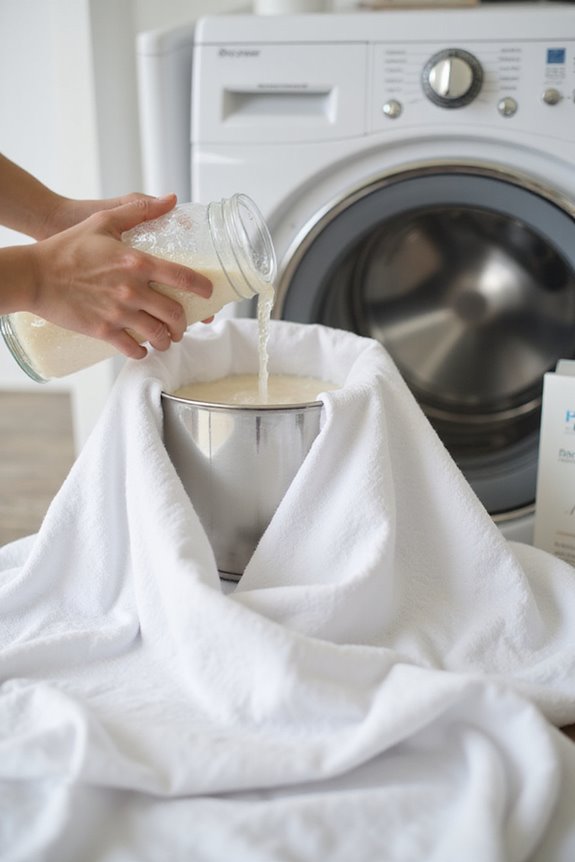
As we tackle the topic of repeated laundering and its effects on fabric softness, it’s essential to recognize how our laundry routines can impact our favorite clothes and towels. Initially, fabric softeners do make fabrics feel softer, but over time, residue buildup can create a stiff or waxy feel. This buildup reduces fabric flexibility, making our beloved towels feel less absorbent and even giving sportswear a less breathable quality. It’s a bit ironic, right? We want our fabrics to feel nice, but too much softener can backfire! If we reduce our softener use or switch to alternatives, we might find that our fabrics regain their softness. Additionally, opting for eco-friendly options can help minimize residue while still providing benefits like static reduction. So, let’s keep our laundry habits in check for better results!
Impact on Fabric Thermal Comfort and Breathability
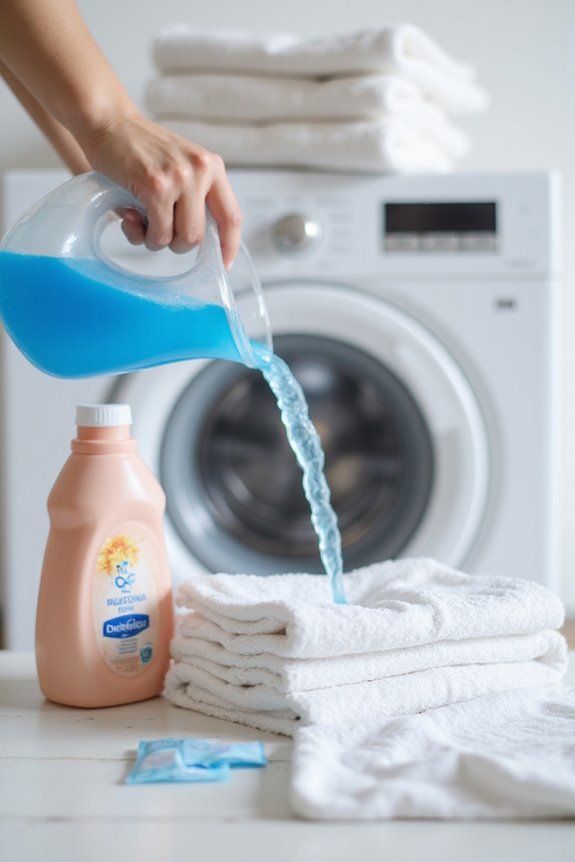
Fabric softeners might seem like a simple addition to our laundry routine, but they can really impact how our clothes feel and perform. While they may make fabrics feel softer, they also reduce breathability. This means our clothes can get hot and sticky, especially in warm weather. The waxy coating that softeners leave behind decreases moisture management, trapping sweat next to our skin. Plus, they increase thermal insulation, which sounds nice in winter but can make us uncomfortable when it’s hot out. Over time, this can lead to a less pleasant wearing experience. So, while we love that fresh-out-of-the-dryer softness, we should think about how softeners affect our comfort too! Additionally, some fabric softeners, like Bounce Pet Hair and Lint Guard, specifically cater to pet owners by reducing static cling and repelling pet hair effectively.
Safety Concerns Related to Flammability
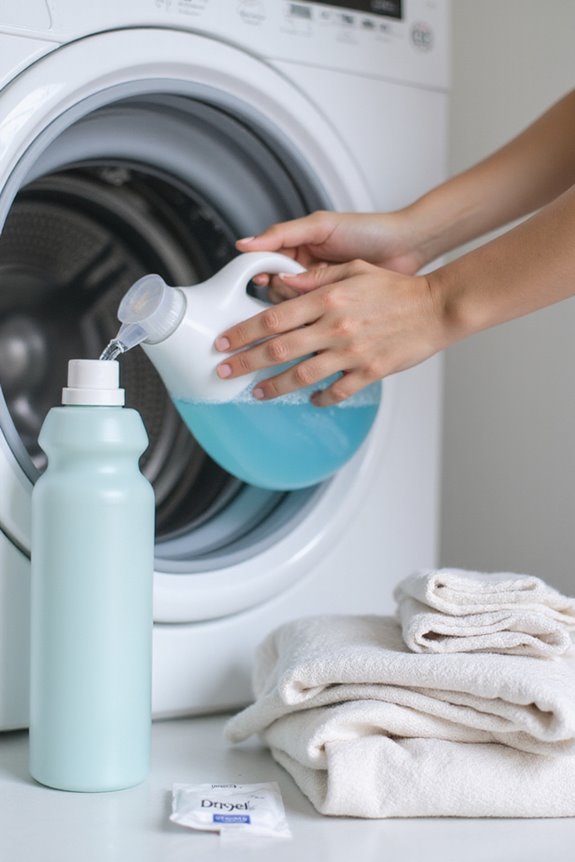
A surprising number of us might not realize the safety risks associated with using fabric softeners, especially when it comes to flammability. These products can actually make certain fabrics burn faster, increasing flammability risks. For instance, fabrics like terry cloth are particularly vulnerable. We’ve all heard the horror stories, like that tragic incident with a terry cloth robe igniting from a cigarette! Safety warnings clearly advise against using fabric softeners on flame-resistant clothing, like kids’ pajamas. Ignoring this can compromise protection. So, let’s remember to keep fabric softeners away from open flames and smoking materials. It’s a small step that can help us avoid accidents and keep our homes safer. Stay informed and safe!
Recommendations for Long-Term Fabric Care and Softness
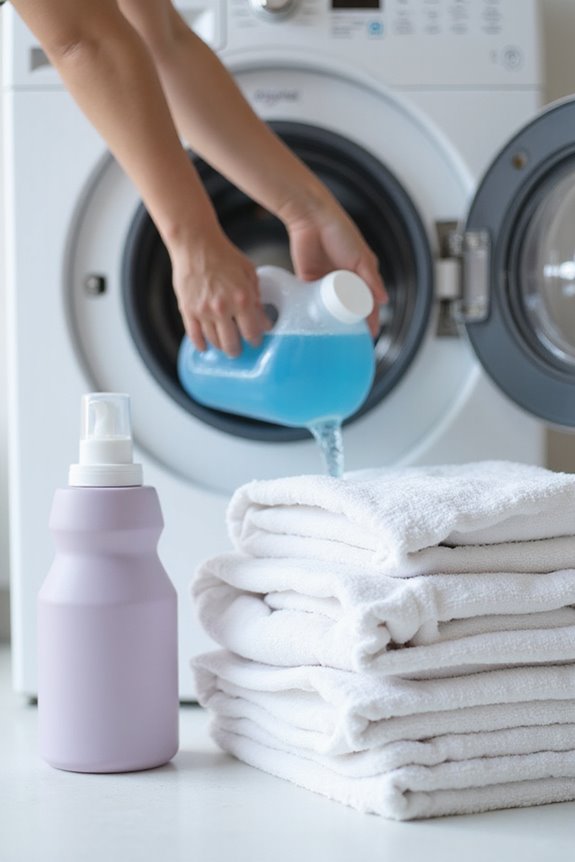
Using fabric softeners may seem like a simple way to keep our clothes feeling nice and cozy. However, as we’ve learned, they can cause buildup over time. To maintain softness, let’s consider some alternatives. Wool dryer balls are fantastic! They reduce static and soften fabrics without leaving residue. Additionally, Wool dryer balls are reusable for over 1,000 loads, making them a cost-effective option. We can also use vinegar in the rinse cycle to soften clothes naturally. When storing our fabrics, make sure they’re clean and dry, as moisture can lead to mildew. And remember, washing in cold water helps prevent fiber damage. Finally, let’s avoid fabric softeners on athletic wear to keep that moisture-wicking power intact. By following these tips and exploring alternative materials, we’ll keep our clothes feeling great for longer!
Frequently Asked Questions
How Do Different Fabric Types React to Fabric Softeners?
When we consider how different fabric types react to fabric softeners, we see cotton blends respond positively, enhancing softness, while synthetic fibers often improve in feel too, but we need to avoid overusing softeners for ideal performance.
Can Fabric Softeners Cause Allergic Reactions in Sensitive Individuals?
Like a hidden thorn in a rose, fabric softeners can trigger allergic reactions in individuals with sensitive skin. We should be cautious, as the chemicals may cause irritation or discomfort, making it essential to choose wisely.
What Are the Environmental Impacts of Using Fabric Softeners?
We’ve got to take into account that fabric softeners’ chemical composition contributes to environmental pollution, harming aquatic ecosystems and air quality. It’s essential we seek sustainable alternatives to minimize these negative impacts on our planet.
Are There Natural Alternatives to Fabric Softeners Available?
Many are aware that some might doubt natural alternatives, but vinegar benefits and baking soda can soften fabrics effectively. They’re budget-friendly, reduce residues, and keep clothes fresh, making them great choices for our laundry routines.
How Often Should I Use Fabric Softeners for Best Results?
To achieve ideal usage, we should use fabric softener frequency wisely. For regular laundry, every 2-3 washes is best, especially for items like sheets and towels, ensuring softness without damaging fabrics or reducing absorbency.


